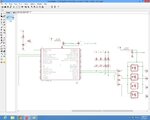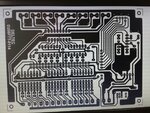abc_de
Full Member level 5

- Joined
- Jan 9, 2014
- Messages
- 243
- Helped
- 11
- Reputation
- 22
- Reaction score
- 11
- Trophy points
- 1,298
- Location
- Ludhiana ਪੰਜਾਬ
- Activity points
- 2,939
Hi ..
My microcontroller has stopped working and has gotten out of order while using in harsh industrial environment. i am driving circuit by +24v SMPS (OMRON) and using Line filter (COMMON MODE CHOCK) for 220v.
in circuit i have use decoupling caps .1uf with each IC and 10uf Bypass caps.
please guide me how i can avoid this problem
My microcontroller has stopped working and has gotten out of order while using in harsh industrial environment. i am driving circuit by +24v SMPS (OMRON) and using Line filter (COMMON MODE CHOCK) for 220v.
in circuit i have use decoupling caps .1uf with each IC and 10uf Bypass caps.
please guide me how i can avoid this problem







